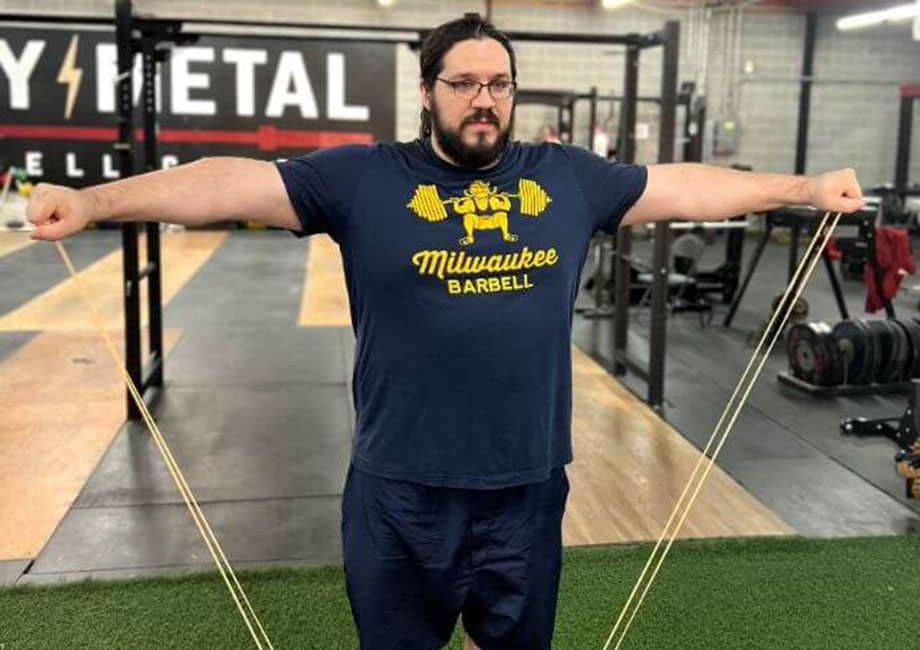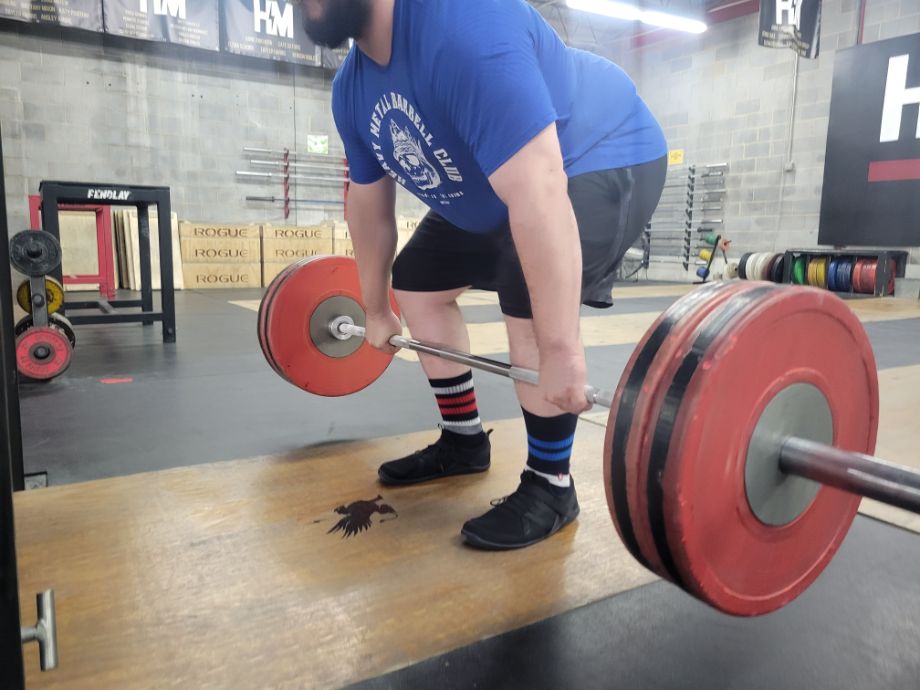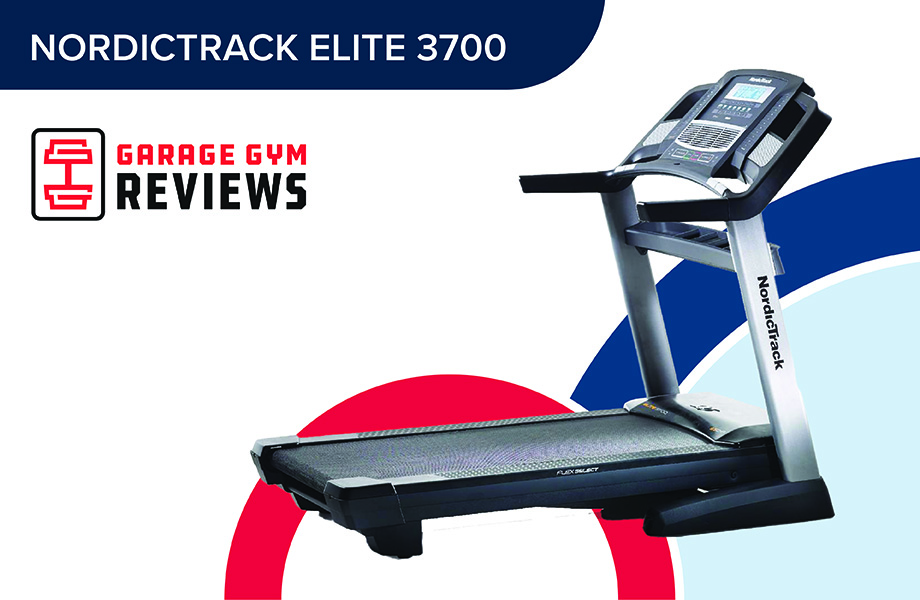Getting a great upper body workout relies on combining compound exercises to hit the major muscle groups with isolation exercises that really let you focus on building strength, size, and endurance in all the essential areas.
The lateral raise is one such isolation exercise that targets the lateral deltoid to help build muscle, shoulder stability, flexibility, and better overall shoulder health.
Kate Meier, NASM-CPT, USAW-L1, CF-L1, and GGR Head of Content, shares step-by-step instructions on how to do lateral raises with proper form as well as trainer tips, common mistakes to avoid, and a few variations to keep your workout routine extra spicy!
How To Do Lateral Raises
Lateral raises (side raises)
- Exercise type: Isolation
- Targeted muscles: Deltoids (shoulder)
- Secondary muscles: Trapezius, Serratus anterior
- Equipment needed: Dumbbells, resistance bands, or cable machine
- Difficulty level: Beginner to advanced
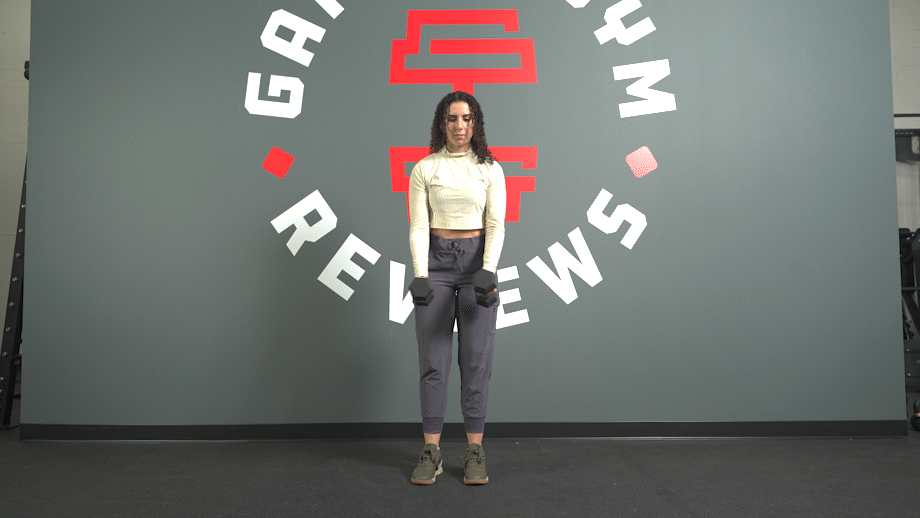
- Stand with your feet shoulder-width apart, chest tall, core tight, and arms at your sides.
- Hold a light dumbbell in each hand with a neutral grip (palms facing you).
- Lift the dumbbells straight up and out, keeping our arms fully extended except for a slight bend to protect your elbow joint. Continue until your arms are at shoulder height.
- Squeeze your shoulder muscles at the top of the movement, then slowly return to the starting position by controlling their descent.
RELATED: Best Dumbbells
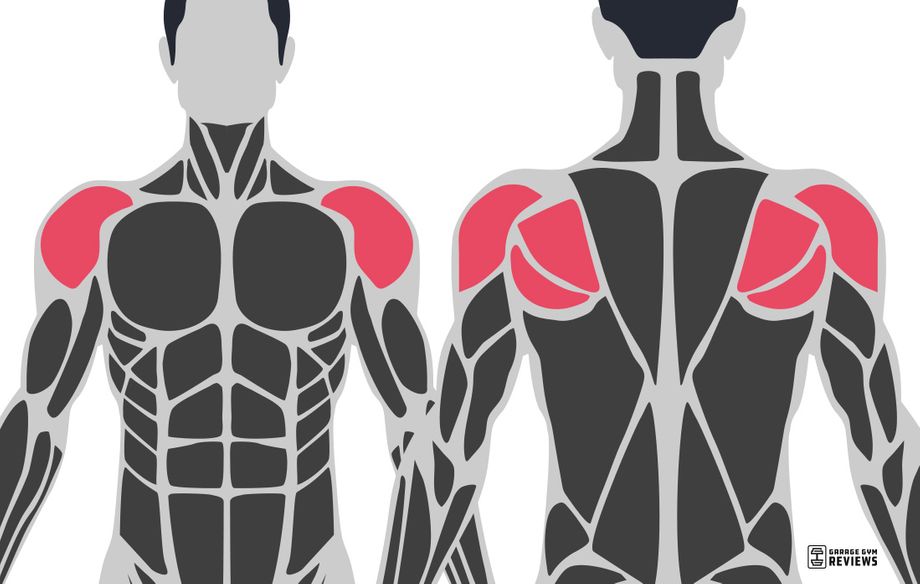
Trainer Tips for Form
The side lateral raise is a simple movement—we even consider it one of the best shoulder exercises—but there are a few key things to keep in mind. Here are the top tips on maintaining perfect form from Kate Meier, CPT, USAW-L1, CF-L1.
Control the Movement—Don’t Swing the Weights
Some exercises benefit from a little momentum, like kettlebell swings and Olympic lifts like the snatch and clean and jerk. For dumbbell lateral raises, momentum is a big no-no.
“Moving slowly and controlling the movement during both the concentric and eccentric phases will help you reap the maximum reward from each rep,” said Kate, “because it forces you to use your delts to do the work rather than momentum or other muscles that contribute to create additional movement.”
Additionally, flinging the weights around like a lunatic makes you much more likely to move unnaturally or jerk something out of alignment, leading to pain or injury.
Brace Your Core
Performing lateral raises requires that you maintain a strong, upright posture throughout the exercise’s range of motion. To do that, you’ll need to brace those core muscles to keep the trunk stable and still as you exclusively use your shoulder muscles to bring those dumbbells up.
RELATED: Functional Core Exercises
“You can also sit down to do your lateral raises, which helps you stay stable without having to rely as much on your core muscles,” says Kate. “You’ll still need to engage your core to some degree to maintain good posture, but having the benefit of back support lets you really hone in and focus on a strong contraction from your deltoid muscles.”
Soft Bend In The Knees and Elbows
Holding a dumbbell so far from the body places loads of shear forces on your elbow joints. It’s for that reason that most people use lighter weights for lateral and front raises versus other shoulder exercises like the overhead press.
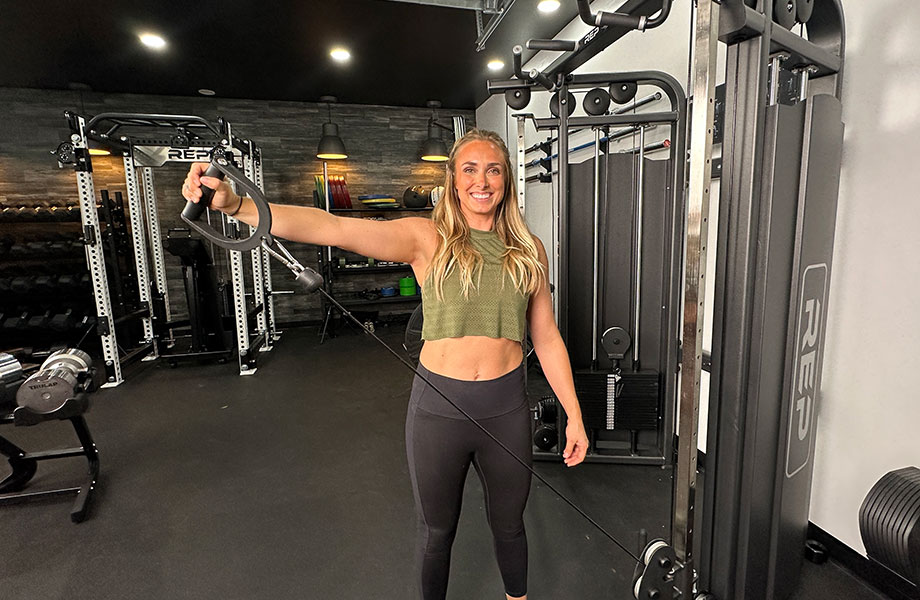
To protect the elbow joint, make sure to maintain a soft bend in the elbows from start to finish. The same goes for your knees if you’re doing your raises standing, as hyperextending the knee could contribute or cause injury if you’re not careful during your set.
RELATED: Best Knee Sleeves
Benefits of Lateral Raises
Incorporating lateral raises into your workout routine will put you on the path to building boulder-like delts. From enhancing shoulder strength and stability to improving muscle definition, here are the key benefits of this effective exercise:
Improves Shoulder Strength
Lateral raises specifically target the middle deltoids, which are crucial for shoulder strength and stability. Strengthening these muscles can enhance your overall shoulder function and help with lifting, pushing, and other upper-body movements. Improved shoulder strength can also aid in better performance in sports and daily activities.
Enhances Muscle Definition
By isolating the deltoids, lateral raises contribute to better muscle definition and tone in the shoulders. This exercise helps create a more rounded and sculpted shoulder appearance, adding to the overall aesthetics of your upper body. Consistent practice can lead to visibly more defined shoulder muscles.
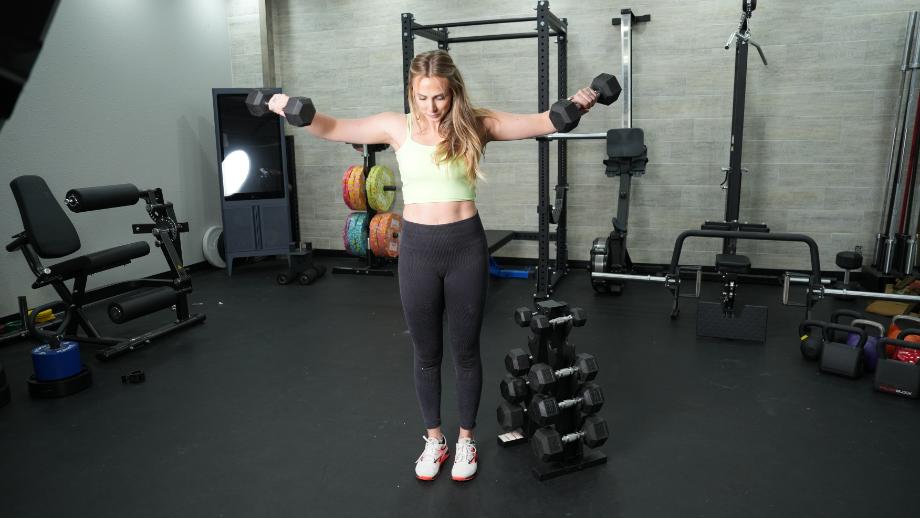
Increases Shoulder Stability
Lateral raises play a significant role in improving shoulder stability, which is essential for preventing injuries. Stronger and more stable shoulders are less prone to dislocations and strains. Enhanced stability also supports better posture and reduces the risk of overuse injuries in the shoulder joint.
Common Lateral Raise Mistakes
If you’re doing your side raises right, your side delts will receive loads of muscle activation and help increase shoulder strength, shoulder joint stability, and bigger shoulders.
But, if you’re making mistakes, you could be depriving yourself of those gains and, worse, contributing to a slew of nasty injuries. Here are some common mistakes to avoid.
Locking Out The Elbows
“Completely locking out the elbows during a set of lateral raises places shear forces on the elbow joint and puts you at risk for hyperextension,” says Kate Meier, CPT, USAW-L1, CF-L1. “You don’t need a dramatic bend in the elbow, but a slight bend is enough to protect the joint while maintaining good form.”
The same goes for your knees, as totally locking them out could lead to pain or injury. Keeping them slightly bent will help prevent this from happening.
Leading With the Hands, Not Shoulders
We have a natural tendency to lead with our arms and hands whenever we’re holding weights. Many of us are guilty of that for exercises like the deadlift and clean, for example, but the same is true for lateral raises.
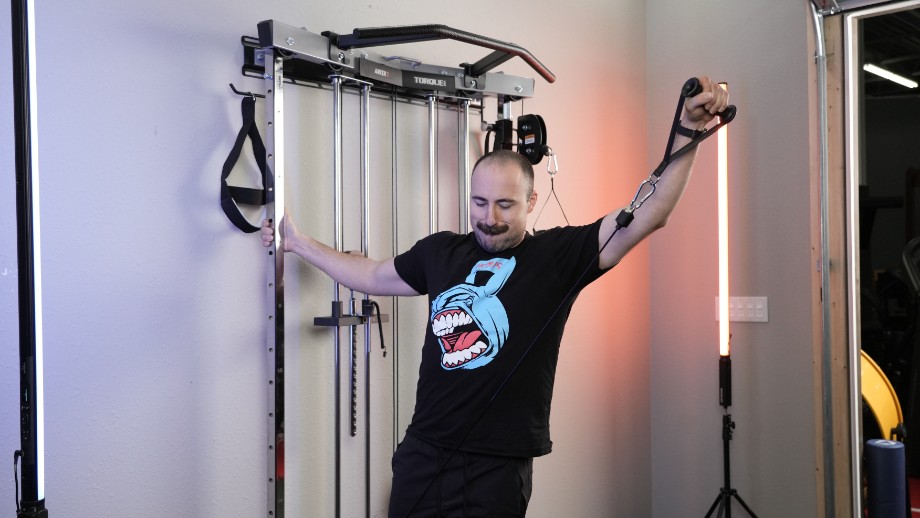
“Leading with your hands places stress on the wrist joint when, really, the shoulders should bear the brunt of the resistance,” says Kate. “Make sure the movement originates from the shoulders. That’s where the muscle activation, strength gains, and hypertrophy should all occur.”
RELATED: Hypertrophy Workout
Lifting the Weights Too High
The range of motion is also important during lateral raises. You’ll receive optimal muscle activation to your deltoids if you bring your arms to shoulder height and no higher.
Raising your arms above shoulder height isn’t necessarily dangerous, but it shifts the emphasis off the deltoids and onto the trapezius muscles of the upper back. That might sound beneficial if you’re working to cultivate overall upper body muscle and strength, but you’ll lose some of that activation that makes the lateral raise one of the literal best deltoid exercises.
Safety Tips and Precautions
When performing lateral raises, it’s crucial to use proper form to protect your shoulder joints. Start with a slight bend in your elbows and lift the weights to shoulder height without going higher, as this prevents unnecessary strain. Keeping your core engaged helps maintain proper posture and reduces stress on your lower back.
Beginners should use lighter weights to master the technique and avoid overloading their shoulders. No matter your experience level, you should always warm up your shoulders and surrounding muscles with dynamic stretches or calisthenics to prepare your body for this isolation exercise. These precautionary measures can protect you from injury and prepare your delts for the challenge ahead.
Lateral Raise Variations
To modify the lateral raise and make it more manageable, start by slightly bending your elbows to bring the weights closer to your body. This reduces the lever length, making the exercise less challenging on your shoulder joint. Plus, this adjustment helps control the movement and focus on the middle deltoids.
Additionally, you can perform the exercise seated, which provides more stability and reduces the risk of using momentum. Another modification is to use resistance bands instead of dumbbells, as the variable resistance can make it easier to control the movement. Finally, performing a unilateral variation can help you focus on form and muscle engagement, ensuring that each shoulder is worked effectively.
RELATED: Unilateral Exercises: Advice From a CPT
Here are a few common lateral raise variations.
Cable Machine Lateral Raises
Free weights often reign supreme in the gym, but never underestimate the effect cable machine workouts can have on your overall physical fitness.
If you have a cable machine available, you can absolutely convert your traditional dumbbell version of the exercise into a cable lateral raise.
The only thing is that doing both arms simultaneously may not be possible unless your gym has a cable machine with handles and weight stacks on two sides. If you only have one, you’ll have to perform the movement unilaterally, but that’s a good thing, especially if you’re looking to correct muscle imbalances or bilateral deficits.
RELATED: Unilateral Exercises
Assuming you only have access to one handle, here’s how to do the cable lateral raise:
- Adjust the cable pulley to the lowest setting, then attach a stirrup handle attachment.
- Stand with your shoulder facing the weight stack and reach across the body to grip the handle with the opposite handle. Hold it in front of the body.
- Step away from the machine to create tension, then raise your working arm laterally until it reaches shoulder height. Squeeze your shoulder muscles at the top of the movement.
- Slowly bring it back to the starting position.
- Complete all reps, then switch sides and repeat the set.
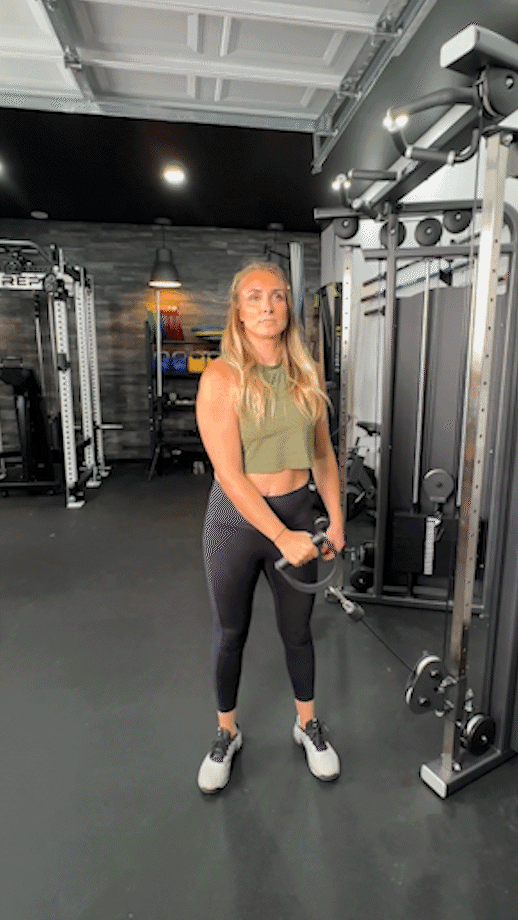
Seated Lateral Raises
“Performing any standing exercise gives you a chance to cheat reps using your legs,” says Kate Meier, CPT, USAW-L1, CF-L1, and GGR head of content,. “Sitting down takes that away so you’ll have to use only the intended muscle group to move the weight.”
Sitting down also gives you a nice, cushioned backrest to keep your torso upright, so you won’t need to brace the core as intensely as you would during the standing version of the exercise.
To convert your standing lateral raise into a seated one, simply grab two light weights, sit down, and lift as per usual. Keep your back pressed into the backrest and your feet planted on the floor.
RELATED: Best Weight Benches
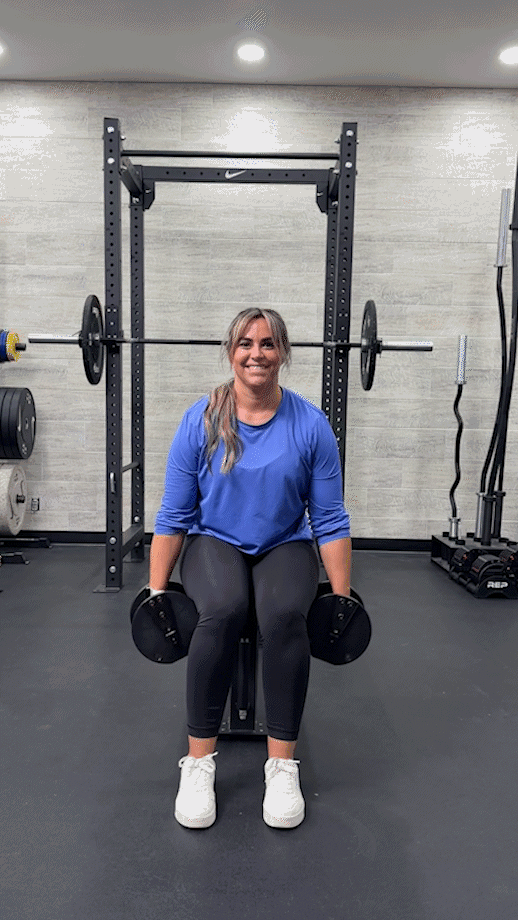
Resistance Band Lateral Raises
Resistance bands, like cable machines, offer a totally different type of resistance than free weights, but, unlike cable machines, they’re inexpensive and portable.
Here’s how to perform a lateral raise using a resistance band:
- Place the middle of your resistance band on the floor and step on it with both feet.
- Grip both handles using an overhand grip and hold them at your sides.
- Slowly pull the handles to shoulder height, squeezing your shoulder muscles at the top.
- Slowly guide the handles back to the starting position, controlling their descent.
RELATED: Best Resistance Bands
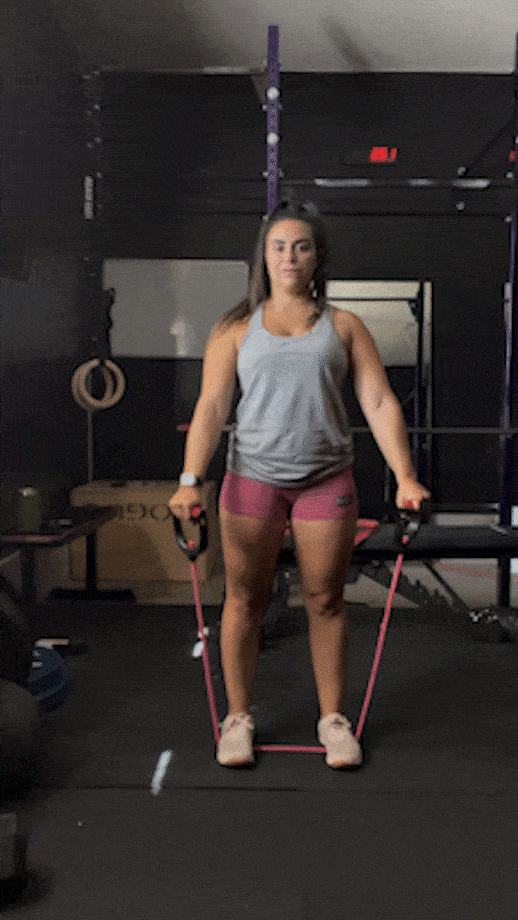
Lateral Raises: FAQs
What muscles do lateral raises work?
The lateral raise is a must for any shoulder workout since it’s one of the best exercises for targeting the deltoid muscles. The lateral deltoid receives the lion’s share of muscle activation, but the anterior deltoid and posterior deltoid should get some ancillary activation, too.
Other muscles that are not considered prime movers but receive some activation include the trapezius muscles in your upper back, the triceps in your upper arms, and, if performing the exercise standing, your core muscles, too.
RELATED: Arm Workouts with Weights
Is it better to go heavy or light on lateral raises?
Strength training regimens often demand you go heavy, but front and lateral raises should be comparatively lighter compared to exercises like the shoulder press or bench press.
That’s because holding a pair of dumbbells so far from the body is more challenging than keeping them close, placing more shear force on your joints as well.
“Going light is the best way to make sure you’re getting the most from each rep, activating the right muscle groups, and not overburdening your joints and leading to pain or injury,” says Kate Meier, CPT, USAW-L1, CF-L1. “I always recommend perfect reps at a lighter weight than forced, sloppy reps and going heavy.”
Should you bend your arms for lateral raises?
Keeping your arms fully extended leaves your elbows vulnerable to immense shear forces that could cause injury. You definitely don’t want that, so incorporating a slight bend will work to protect you as you progress to heavier and heavier weights.
Remember— the operative word here is “slight.” You do not need to make a 90-degree angle with your elbow, but don’t totally straighten it either.
Why are lateral raises so difficult?
Lateral raises are challenging because they isolate the deltoid muscles, particularly the middle delts, which are smaller and used less frequently than larger muscle groups. Additionally, the exercise requires strict form and control to target your shoulders effectively.


